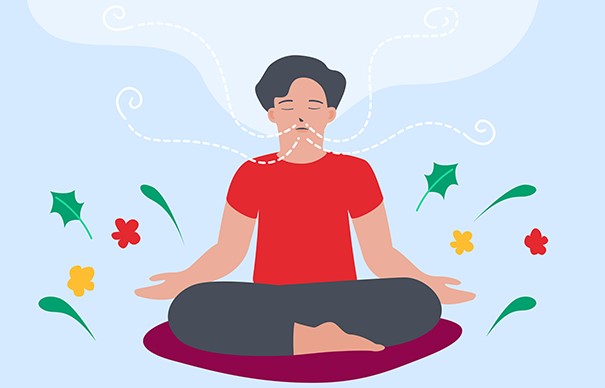
Osteoporosis, a condition characterized by weak and brittle bones, affects millions of people worldwide, particularly as they age. The thinning of bones increases the risk of fractures, often resulting in pain, loss of mobility, and a reduced quality of life. While osteoporosis can be treated with medication, preventing osteoporosis naturally through lifestyle changes is an effective way to maintain strong bones and reduce the risk of developing this condition. In this article, we’ll explore natural ways to support bone health and take proactive steps toward preventing osteoporosis, so you can maintain an active and healthy lifestyle as you age.
1. Understanding Osteoporosis and Its Risks
Before delving into ways to prevent osteoporosis naturally, it’s important to understand what osteoporosis is and the risk factors associated with it. Osteoporosis occurs when the body loses too much bone mass or doesn’t produce enough bone tissue, leading to fragile bones that are more prone to breaking. The most common sites for fractures due to osteoporosis are the hip, spine, and wrists.
Several factors can increase the risk of developing osteoporosis, including:
- Age: As you age, your bone density naturally decreases.
- Gender: Women, especially post-menopausal women, are at a higher risk due to the decrease in estrogen levels.
- Genetics: Family history can play a role in bone health.
- Diet and Lifestyle: Poor nutrition, lack of physical activity, and smoking can all contribute to weakened bones.
While you cannot control factors like age and genetics, adopting healthy habits can help mitigate other risk factors and play a crucial role in preventing osteoporosis naturally.
2. Essential Nutrients for Bone Health
One of the most effective natural approaches to preventing osteoporosis is ensuring that your body receives the essential nutrients necessary to maintain strong bones. Two key nutrients, calcium and vitamin D, are particularly important for bone health.
a. Calcium: The Building Block of Bones
Calcium is the primary mineral in bones, making it crucial for maintaining bone density. A calcium-rich diet can help you build strong bones and slow down bone loss as you age. The recommended daily intake of calcium varies by age and sex, but most adults need around 1,000 to 1,200 mg of calcium per day.
Excellent sources of calcium include:
- Dairy products such as milk, yogurt, and cheese.
- Leafy greens like kale, spinach, and collard greens.
- Fortified plant-based milk alternatives such as almond, soy, and oat milk.
- Tofu and fortified cereals.
If you have difficulty getting enough calcium from food, consider calcium supplements after consulting with a healthcare provider.
b. Vitamin D: Essential for Calcium Absorption
Vitamin D plays a crucial role in bone health by helping the body absorb calcium more effectively. Without sufficient vitamin D, even if you’re consuming enough calcium, your body may struggle to absorb it properly. The recommended daily intake of vitamin D for most adults is 600-800 IU, depending on age.
The best natural source of vitamin D is sunlight. Spending time outdoors in the sun for about 15-30 minutes a day can help your body produce vitamin D. Additionally, vitamin D can be found in foods such as:
- Fatty fish like salmon, tuna, and mackerel.
- Fortified foods like cereals, orange juice, and milk.
- Egg yolks and mushrooms exposed to sunlight.
If you live in an area with limited sunlight or have a vitamin D deficiency, consider supplementation under the guidance of a healthcare provider.
3. Physical Activity and Bone Strength
Exercise plays an essential role in preventing osteoporosis naturally by stimulating bone growth and improving bone density. Weight-bearing and strength-training exercises are particularly beneficial for maintaining bone health and preventing bone loss.
a. Weight-Bearing Exercise
Weight-bearing exercises are those that force you to work against gravity, which stimulates the bones to grow stronger. These include activities such as:
- Walking or hiking
- Jogging or running
- Dancing
- Stair climbing
- Tennis or other racquet sports
Aim for at least 30 minutes of weight-bearing exercise most days of the week to help strengthen your bones and reduce the risk of osteoporosis.
b. Strength Training
In addition to weight-bearing exercises, strength training is also important for bone health. Lifting weights or performing bodyweight exercises such as squats, lunges, and push-ups helps build muscle mass, which in turn supports your bones. Strong muscles take pressure off bones, reducing the risk of fractures and supporting overall skeletal health.
Include strength training exercises in your routine at least two to three times per week, targeting all major muscle groups.
c. Balance and Flexibility Training
As we age, balance and coordination become increasingly important for preventing falls, which can result in fractures in individuals with osteoporosis. Incorporating balance and flexibility exercises, such as yoga or tai chi, can help improve your posture, flexibility, and overall balance. These exercises can also reduce the risk of falls, which is particularly important for those with weakened bones.
4. Healthy Lifestyle Choices
In addition to proper nutrition and regular exercise, certain lifestyle choices can further support bone health and help prevent osteoporosis.
a. Avoid Smoking and Excessive Alcohol
Smoking and excessive alcohol consumption are both linked to a higher risk of osteoporosis. Smoking reduces the blood supply to bones, impairing bone formation, while excessive alcohol can interfere with the body’s ability to absorb essential nutrients like calcium. Limiting alcohol intake and quitting smoking can significantly reduce your risk of developing osteoporosis.
b. Maintain a Healthy Weight
Being overweight or obese can increase the risk of osteoporosis, particularly in postmenopausal women. Excess weight can put additional stress on bones, especially in the lower body. On the other hand, being underweight can also lead to decreased bone density. Strive to maintain a healthy weight by balancing a nutritious diet and regular physical activity.
Preventing osteoporosis naturally is a proactive and empowering approach to maintaining strong bones and reducing the risk of fractures as you age. By incorporating a balanced diet rich in calcium and vitamin D, engaging in weight-bearing and strength-training exercises, and making healthy lifestyle choices, you can significantly improve your bone health. These natural strategies can help you stay active, independent, and free from the debilitating effects of osteoporosis. It’s important to consult with your healthcare provider to create a tailored plan that suits your individual needs, but adopting these habits is a great way to support your bone health for years to come.




